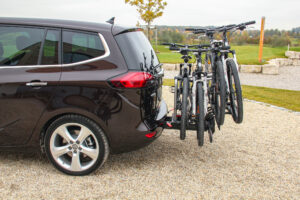Bottom Brackets can help you optimize your bike’s performance. When you buy your bike out of the factory, the bottom bracket it comes with is just designed to get the job done and not much else. To improve the ride quality, pedaling efficiency, and overall experience, you’ll want to upgrade. The thing is, there are a lot of choices on the market, and you need to know how to select the one that’s best for your needs. Here’s more information:
Types of Bottom Brackets
There are several bottom bracket standards, and the type you choose will depend largely on your bike’s design and your specific riding needs. The two most common categories are threaded bottom brackets and press-fit bottom brackets. Here’s an explanation of each:
Threaded Bottom Brackets
Threaded bottom brackets have been a staple in bicycle design for years. As the name suggests, they are threaded into the bike’s frame, which helps ensure a secure fit. They are known for being relatively easy to install, maintain, and replace. One key advantage is their resistance to creaking—a common problem with some press-fit systems. Threaded bottom brackets, such as the BSA (British Standard Thread), are still widely used in road and mountain bikes.
Press-Fit Bottom Brackets
In press-fit systems, the bearings are pressed directly into the frame, eliminating the need for threading. The goal of the press-fit design is to allow larger diameter spindles and lighter frames. However, some riders find that press-fit bottom brackets can develop annoying creaks over time if not installed precisely. Popular press-fit standards include BB30 and PF30. While they offer performance advantages, they may require more frequent maintenance to avoid noise and wear issues.
Different Materials
Bottom brackets are typically made from steel, aluminum, or ceramic materials. The material choice can affect the performance, durability, and price of the bottom bracket.
- Steel Bearings: Known for durability and affordability, steel bearings are a popular choice for most riders. However, they are heavier and may not spin as smoothly as ceramic options.
- Ceramic Bearings: If you’re looking for an upgrade, ceramic bearings offer reduced friction and a smoother ride. They’re lightweight and can last longer than steel bearings. However, they come at a premium price and may require more meticulous maintenance to keep them in top shape.
- Alloy Bearings. Note that alloy bottom brackets (Like Hawk Racing’s) are another option. These maximize performance while also being cost effective. They are proven to be efficient and suited for hobbyists and pro athletes alike.
Bottom Bracket Compatibility
Before making any purchase, ensure that the bottom bracket you choose is compatible with your bike frame and crankset. This involves checking the frame’s bottom bracket shell width and spindle diameter. Compatibility issues can cause poor performance and even damage your bike. Make sure you select the right type for your bike to prevent these issues!
Choosing the best bottom bracket for your bike can make a world of difference in your ride quality. Whether you opt for the tried-and-true reliability of a threaded system or the weight-saving performance of a press-fit option, understanding your riding style, maintenance needs, and compatibility are key to making the right decision. Please take a look at our selection for more information on what we have to offer.
Share this post:



